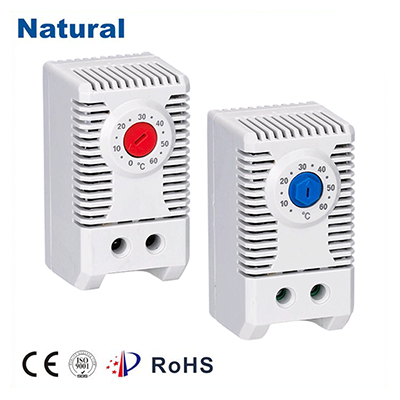In today’s world, we often take for granted the comfort and convenience provided by modern heating and cooling systems. Behind the scenes, a crucial component ensures that our environments remain at just the right temperature – the bimetal thermostat. In this article, we will delve into the fascinating world of bimetal thermostats, exploring their history, how they work, and their significance in modern life.

The Evolution of Thermostats: A Brief History To appreciate the innovation of bimetal thermostats, we must first understand their historical context. Thermostats have come a long way from their humble beginnings. In the 17th century, Dutch scientist Cornelius Drebbel is credited with inventing one of the earliest thermostats, which employed mercury and relied on thermal expansion. However, it was not until the 19th century that the modern thermostat began to take shape. How Bimetal Thermostats Work Bimetal thermostats operate on a simple yet ingenious principle – the differential expansion of two metals. Typically, a bimetallic strip composed of two different metals with different coefficients of thermal expansion is used. When subjected to temperature changes, these metals expand or contract at different rates, causing the strip to bend. This bending action is what triggers the thermostat to open or close an electrical circuit, thus controlling the heating or cooling system. Precision and Reliability One of the primary advantages of bimetal thermostats is their precision and reliability. They can maintain temperature control within very tight tolerances, ensuring that your home or office remains comfortable. Additionally, bimetal thermostats are known for their durability and long lifespan, making them a cost-effective choice for both residential and industrial applications. Applications of Bimetal Thermostats Bimetal thermostats find application in a wide range of industries and devices. In HVAC (Heating, Ventilation, and Air Conditioning) systems, they regulate the temperature in homes and commercial buildings, optimizing energy efficiency. They are also employed in appliances such as ovens, refrigerators, and water heaters to ensure that these devices operate within safe temperature ranges. Beyond household and industrial use, bimetal thermostats are vital components in automotive engines, safeguarding them from overheating. The Environmental Impact In an era when environmental concerns are paramount, bimetal thermostats play a vital role in reducing energy consumption. By precisely controlling temperature, they help minimize energy waste, thereby decreasing greenhouse gas emissions. This not only lowers utility bills but also contributes to a more sustainable future. Challenges and Future Innovations While bimetal thermostats have served us well for over a century, ongoing research and development are seeking to enhance their capabilities. Innovations such as digital thermostats and smart home integration are changing the landscape of temperature control. These advancements offer greater convenience and energy efficiency while maintaining the core principles of bimetallic temperature regulation. Conclusion In conclusion, bimetal thermostats are unassuming yet essential components of our daily lives. Their ability to precisely control temperature has revolutionized our comfort and energy efficiency. As technology continues to advance, bimetal thermostats remain at the forefront of temperature regulation, ensuring that we stay comfortable while reducing our impact on the environment. So, the next time you adjust your thermostat, take a moment to appreciate the ingenious innovation that is the bimetal thermostat.